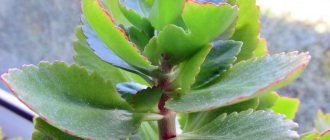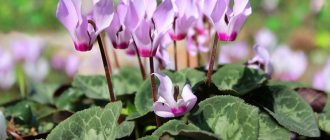All ficus belong to the mulberry family, the main part and all species grow in Asia, and this plant can be found in the tropics and subtropics of both hemispheres. Therefore, the homeland of the ficus requires special care.
The abundance of this genus is represented by more than 800 species. Among the variety of these species, you can choose deciduous and evergreen ficuses, depending on their growth form, they can be shrubs, creeping or in the form of a tree. A variety of varieties of this or that ficus are represented by different leaf shapes and their colors.
Ficuses are the most common indoor plant among gardeners. At home they can grow for a long time.
When working with these plants, be careful, as the milky sap that secretes the juice is poisonous.
Compliance with all growing conditions will allow you to achieve optimal development and growth of your indoor plant. Ficus in the house is always a beautiful plant and comfort.
When choosing a plant, you must understand the characteristics of its cultivation, the variety of species, which provides ideal conditions for design.
Here are several types of popular ficuses: F. bengal, F. benjamina, F. oakleaf, F. cape, F. rubber (elastica), F. large-leaved, F. lyre-shaped, F. creeping, F. ivy-shaped. Regardless of the type, in general the growing conditions are the same for all types of ficus. Types of ficus differ from the shape of the leaf, its color; you can read more about the types of ficus here .
Signs and ficus
There is a belief that ficus and pregnancy are interconnected. If you buy a ficus for your home and place it in the bedroom, it will help you get pregnant soon. Ficus and pregnancy signs say that you need to grow a ficus from a small plant yourself, as if you were raising a baby. Some even wonder what to call ficus. There are signs and superstitions about ficus, but one thing is wonderful - this plant looks great in any home. In an apartment, ficus blooms very rarely, but it brings a piece of nature into the house. Any plant loves attention and good conditions; of course, it can be grown at home.
How to care for ficus
Different types of ficus require different growing conditions. Small ones are best placed on the windowsill; tall and large ones should be placed on the floor, but away from the heating system. Especially in winter. Ficus plants are ready to tolerate any lighting and temperature conditions. But ficus care must be constant. Let's figure out how to care for ficus at home.
Under natural conditions, you can observe the flowering of ficus, but caring for ficus at home is unlikely to allow you to see how ficus blooms.
- The soil. The soil is suitable for ficus - universal for indoor plants, there are also mixtures specifically designed for growing ficus. The ideal soil mixture for planting ficuses: turf, leaf, with the addition of peat and sand (1:1:1). Peat, turf and leaf soil are taken in equal parts, sand must be added.
For greater aeration, add perlite or vermiculite. The bottom of the pot must be covered with expanded clay. This will allow moisture to pass through calmly and not stagnate in the pot. If the ficus is large, it will need more soil and a larger pot.
- Landing. To plant ficuses, choose a pot that suits the plant itself. I don’t recommend taking a very spacious pot, since there is a lot of space and the soil in it has time to stagnate faster than the plant can fill it with roots.
When planting, the pot should be slightly larger in diameter than the plant itself. In other words, the plant in the planting pot should be slightly smaller than the new pot. If planted well, indoor ficus will delight you with its beauty for a long time.
- Transfer. All ficus transplants are carried out in spring. Replanting is done only if the earthen lump of the plant has filled the entire pot. Ficus trees do not tolerate transplantation well. In order to replant a ficus, you need to carefully remove it from the pot, trying not to damage the earthen lump of the plant. And we also plant it in a new pot, which should be slightly larger than the previous one in both height and diameter.
I recommend replanting young ficuses once every two years, but adults once every few years. But it’s better as the pot is filled with roots. The ideal option is not to touch the plant at all, but simply replace the top layer of soil.
Ficus description, photo
Ficus (Ficus) is a light-loving, deciduous and ornamental plant, considered the most famous indoor flower.
There are several types as the plant develops:
- tree;
- bush;
- liana
There are several thousand species. Each type differs in:
- height;
- leaf and branch shape, as well as color.
All species share the presence of milky juice.
The shape of the leaf plate can be very diverse:
- regular;
- lobed;
- whole;
- toothed;
- glossy;
- pubescent.
The foliage color of many specimens is dark green, but they are also found with light green or white veins. The flowers are single or collected in inflorescences, in the form of a spike or a kind of brush. When grown indoors, flowering occurs very rarely.
Where to put
— Lighting . All ficuses with green foliage should be in a well-lit and bright place. If you don’t have enough light, the ficus shoots will bend, which will lead to a loss of decorativeness. Additional lighting can be used. Or you may need to rotate your ficus pots regularly to provide adequate light to the entire plant.
- Temperature . Try to create the optimal temperature. We do not allow temperature fluctuations. In summer, ficuses love warmth; 22-24 is the most optimal temperature, which should not fall below 18 degrees. But winter is a time of peace. The temperature should be a little cooler - 12-13 degrees.
I do not recommend placing ficus trees on a cold windowsill or floor. This will cause a temperature difference in the soil in the pot. Use trays of warm water - this will warm the pot from below. You can fill the tray with expanded clay and place the pot on it, add warm water.
- Humidity . Ficus plants love high humidity, which must be maintained year-round. Especially in winter, when the heating is turned on and the air in the room becomes much drier. Constant spraying, wiping the leaves with a damp cloth.
Spraying and treating leaves will allow you to remove accumulated dust and also help prevent pests. During winter, expanded clay can also be used in pallets. We fill the trays with water and this will provide additional humidity.
How to water
- Watering. During growth, water the ficus frequently. The earthen ball should always be slightly moist. Water for irrigation should be well settled. In winter, when heating, water frequently. Do not overwater ficus plants - they react poorly to waterlogged soil.
- Feeding. All ficus plants are fast-growing plants - they constantly need nutrients. Use mineral fertilizers in liquid form. Add fertilizer to the water for irrigation. In summer we feed twice a month, and in winter only once a month, and it is better to do this on a cloudy day or in the evening.
Soil for propagation
The quality of the substrate is of great importance for rooting. The soil used must have a high degree of moisture and breathability. The ideal option is a mixture of peat or coconut fiber with coarse river sand. This environment is favorable for the germination of fragile, young roots.
However, it is worth understanding that such a substrate contains virtually no nutrients. Therefore, after the seedling takes root, it must be immediately transplanted into fertile soil.
Very often, when propagating, novice gardeners are faced with the problem of mold appearing on the surface of the substrate. To prevent such an undesirable development of events, it is advisable to calcine the soil in the oven for half an hour before use.
Before filling the planting container with soil, be sure to make holes in it to drain excess moisture. However, many gardeners successfully root ficus cuttings in ordinary water. An undoubted advantage of this method is the ability to observe the growth of the root system.
Crown formation
Many types of ficus require crown formation. Many new shoots and giving the desired shape to your ficus depend on this. It is better to do this procedure in the spring. Regardless of the age of the plant, cut off the tops.
This is done on both young and adult ficus trees. Thanks to this formative pruning, new shoots are formed and a lush crown of the plant is obtained. It is especially effective with ficus trees, which are grown as trees.
You can plant several varieties of one ficus in one pot, and as they grow, the shoots intertwine and form a huge crown, consisting of different varieties of ficus, such options are convenient for Benjamin ficuses, with different leaf colors.
Reproduction of rubber ficus
Reproduction of rubber ficus by cuttings is no different from propagation of Benjamin. However, the undoubted advantage of this variety is the fact that not only apical shoots are suitable for cuttings.
You can use the entire cut branch, dividing it into internodes. The main thing is that on the rooted area there is a leaf with a small section of the trunk. Otherwise, the principle of reproduction and care remains unchanged.
How to propagate
Ficus can be propagated in various ways: stem and apical cuttings, air layering, buds and leaves. However, the method of propagation depends on the type of ficus. When reproducing, we choose the desired method.
Propagation by cuttings.
We cut the cuttings at the beginning of spring; it should have two or three leaves. In other words, it should be a top cutting with a growing point. You need to dry the cut of the cutting and wait for the milky juice to come out of the cutting.
To root cuttings we use sand or expanded clay. The end of the cutting can be treated with root or another stimulant. Cover the container with cuttings with a bag or plastic bottle - you need to create greenhouse conditions.
Maintain constant humidity and place in a bright and warm place. Try to avoid direct sunlight. You can also use water to root cuttings; they root well in water, the main thing is to change it constantly. After a month, roots will begin to form on the cuttings. A ficus cutting will give roots faster if it is treated with rootstock.
Leaf propagation.
The process of propagation by leaf or bud is almost similar to propagation by cuttings, only the cutting is cut into parts, each part must have a bud or leaf. The sheet must be rolled into a tube and stuck into the sand. Carefully insert the peg into the hole made by the twisted sheet. For better rooting, before planting, you should carefully split the cut of the cutting and insert a grain of sand or pebble.
Reproduction by layering.
Adult ficus trees, which have grown in height and exposed trunks, are rejuvenated with the help of layering. To do this, in the spring you need to wrap the trunk with the shoot that you want to propagate by layering, cut it and cover it with damp sphagnum or peat.
To keep your structure in place – a place with moss or peat – wrap it in film and tie it with twine. Maintain constant humidity. The tied fragment should be tight enough so that it does not move out. Monitor the humidity and moisturize if necessary.
After a month or two, you can remove the moss and film and new roots will form at the site of the cut. We make a cut, which we then treat with charcoal; the resulting shoots with roots are planted in separate containers.
The ficus itself, from which we took layerings, is being transferred to a regime of careful care. We water it rarely, spray it, and then new shoots will appear from the dormant buds. With the emergence of new shoots, watering can be increased.
Reproduction of Ficus Benjamin
Ficus benjamina is perhaps the most popular variety among houseplant lovers, so let's start with it. Detailed photo instructions for propagating ficus will help even those who are just beginning to master the wisdom of agriculture to understand this matter.
Please note that the branches from which the cuttings are cut must be lignified. Of course, in the apical part of the shoot they may have young leaves, but the lower section, which sinks into the substrate, must be covered with brownish bark. Experiments with young shoots of the current year will most likely lead to failure.
Cut the cuttings with a sharp knife, scalpel or pruning shears, after treating them with a disinfecting solution. The length of the cutting must be at least 10 cm.
Typically, such a cutting contains 4 pairs of leaves. Leave only 4 apical leaf blades, and carefully remove the lower ones.
Rinse the cut thoroughly under running water, and then treat it with a solution that activates root formation. You can use both Kornevin and Heterauxin; both drugs have proven themselves well and received a lot of positive reviews.
Bury the cutting 2 internodes into the substrate and moisten the soil. To create a favorable environment conducive to the survival of the seedling, build a small improvised greenhouse above it. The easiest and most cost-effective option is a cut-off plastic bottle placed on top of a container with a sprout. However, you can cover the seedling with an ordinary plastic bag, stretching it over a wire frame.
The root system will begin to develop after 2-4 weeks. All this time, keep an eye on the earthen lump, preventing it from drying out, and regularly provide sprinkling for the new resident.
- Development of technological production regulations
- Phloxes in personal plots
Ficus transplantation: step-by-step instructions on how and when to replant various types of indoor ficus plants (135 photos and videos)
Pests and diseases
If you follow all the rules of care, ficuses are quite resistant to pests and diseases. Yellowing of the lower leaves on ficus trees is a natural process. Since over time the lower foliage should fall off, exposing the trunk.
If the edges of the leaves turn yellow, there may be a lack of nutrients. When the leaves dry out and curl, this is a signal of dry air in the room, sunburn of the leaves, or lack of moisture in the soil. If ficus plants drop healthy leaves, this may be caused by excessive watering and drafts. Try to find a suitable location for your plant.
— Pests The main pest of most ficuses is the spider mite; it must be noticed in time and treatment must begin. Treat the plant with a suitable preparation. If infected, isolate plants from others, this will prevent infection of other plants. Mealybugs are also dangerous among pests.
It usually appears when neighboring plants are infected. If the infection is weak, treat the plants with a soap solution. In case of severe infestation, we use suitable means to combat this pest.
— Diseases include gray rot and all diseases of the root system that are associated with improper watering. With excess moisture. Which stagnates in the pot - the root system begins to rot, the stems turn black and the leaves fall off.
At the initial stage, dry the plant, do not water it for a while. The top lump can be sprayed. For prevention, you can use appropriate medications, phytosporin.
Flower design
Among the many types of ficus, you can find one that suits you; each type has different varieties. When creating a composition, you can use one type of ficus, combining different varieties. Or supplement it with suitable plants, which will be selected in such a way that the growing conditions are similar to those for ficuses.
Depending on the type of growth, the ficus can be placed in a floor planter, if it is tall and branchy, there are species that can be grown in hanging planters or placed on window sills or stands.
Having chosen one or another type of ficus, you can well select other plants for the composition; you can use it as a single plant and focus on a certain part of the interior in your home. In any case, ficus is an ideal plant for your interiors. Good luck to you.
Origin
The plant belongs to the Mulberry family and has the second name “rubber tree”. The long-liver received its second name because of the milky juice, which contains 15% rubber.
The flower is native to the tropics and subtropics of the Philippines, Malaysia and southern Asia. In the wild, there are species that reach up to 40 meters in height and 5 meters in girth.
Interesting! In Bengal there are trees that cover an area of 1 hectare with their crown.
In a tall tree, the leaf plate can grow up to a meter in length, strictly located towards the ground.
Many peoples consider the rubber tree to be medicinal and magical:
- In Latin America, milk is used to make medicines to treat cancer.
- In Indonesia and northern India, this tree is praised. Believers believe that Buddha sits under the “giant” and enters nirvana. Buddhist people call ficus the “tree of enlightenment.”
- Ceylonese believe that the plant, which grew in 289 BC, represents spirituality. Until now, in every temple in Ceylon there is a custom of tying bright ribbons on tree branches.











